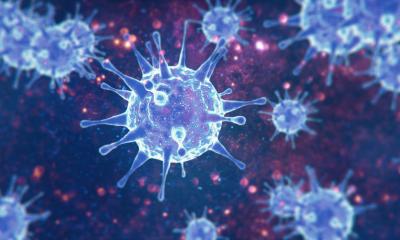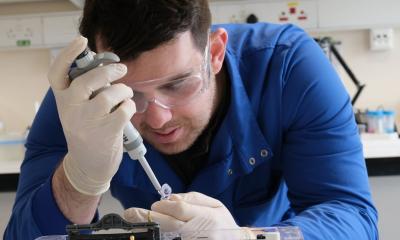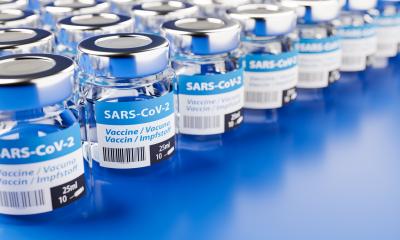Video • COVID-19 video
Coughing visualization shows benefits of wearing a good mask
Coupling function with fashion, cloth and home-sewn face masks are available in a variety of forms and fabrics. While experts underscore that wearing a mask is effective in helping to prevent the spread of COVID-19, not all masks — or the materials with which they’re made — contain virus particles equally.
In a new video, University of Wisconsin–Madison engineer Scott Sanders demonstrates how droplets from a cough escape from or remain inside masks of varying styles and materials.

A mechanical engineering professor who conducts much of his research through the UW–Madison Engine Research Center, Sanders uses lasers to characterize the way gases and particles behave in combustion engines. Pivoting to study mask materials, construction, fit and filtration as the COVID-19 pandemic emerged was natural, since a cough or sneeze can spray particles in a size range that Sanders could study with the tools he already uses in combustion systems research.
In his video, Sanders used a mannequin to produce a simulated cough (adding more droplets than are in an actual cough, to make the cough easier to see). While the visualization doesn’t directly track the spread of virus particles, Sanders believes it will help people see a risk that is otherwise invisible. With no mask, droplets travel more than 3 feet in front of the mannequin. Masks with valves allow many particles to escape. Cloth masks do a better job of containing the particles; however, cloth masks with a loose weave don’t perform as well as those made with tightly woven cloth. And, masks without fitted nose pieces allow particles to escape through gaps in the top, under the wearer’s eyes. Other mask styles, including flat-fold masks, can leak particles out the sides near the ears.
There are two aspects to masks: Personal protection, or reducing the amount of airborne droplets the wearer inhales, and source control, which is containing the wearer’s own respiratory droplets
Scott Sanders
Sanders found that, in general, the homemade mask shape most effective at containing droplets is a neck-gaiter-style mask that combines a nose piece with an elastic cord that wearers can toggle to snug the mask to their face. The extra effectiveness of the neck-gaiter mask does come at a cost: It is a larger mask, and it isn’t as easily removed. “That said, wearers can quickly and easily slide the gaiter down around their neck and back up to their face as needed,” he says. Additionally, the neck-gaiter mask can be a good alternative for small children or others for whom traditional masks might be difficult to fit, and it may be more tolerable for people who are sensitive to wearing other mask styles because of underlying respiratory or other concerns.
Sanders believes his visualization enables people to see a risk that is otherwise mostly invisible. “I hope that research like this will enable people to make informed decisions about distancing and mask-wearing,” he says. He also has created a video that shows a simple way to sew the neck-gaiter mask using a rectangle of tightly woven fabric, a toggle, cord and metal nose piece. “There are two aspects to masks: Personal protection, or reducing the amount of airborne droplets the wearer inhales, and source control, which is containing the wearer’s own respiratory droplets,” Sanders says. “The ideal mask would do an excellent job at both aspects, and work whether wearers are talking, yelling, coughing or sneezing. That is a tall order — even for medical-grade respirators, let alone homemade masks. However, as the video shows, a homemade cloth mask with a nose piece can provide significant source control, which in turn could improve public health.”
Sanders emphasizes that home-sewn masks aren’t designed to replace medical-grade personal protective equipment, and should be used in conjunction with other recommended measures, including physical distancing and frequent hand-washing, among others.
Source: University of Wisconsin–Madison
08.07.2020











